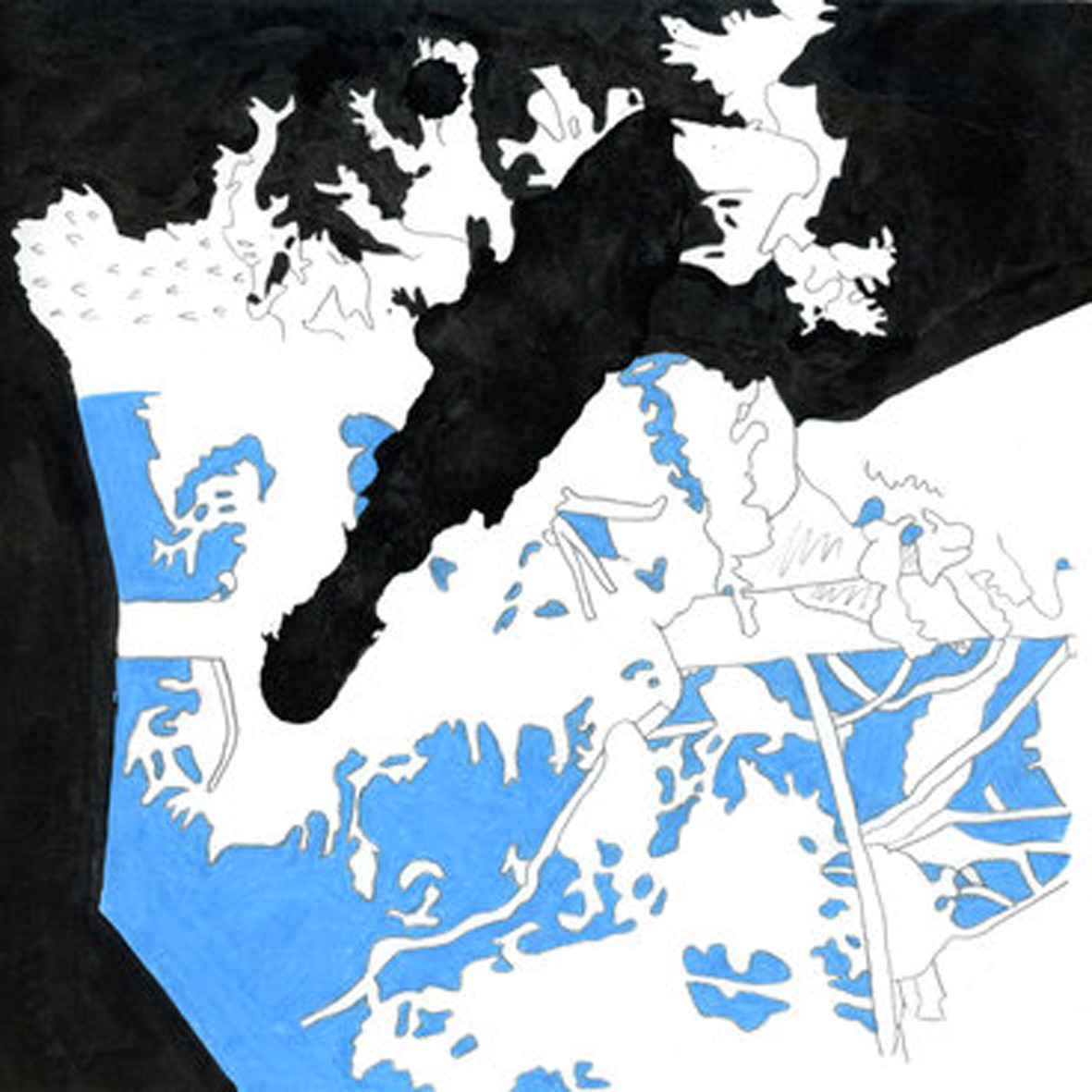Silvia Kastel, "Air Lows"
 Remarkably, this is Silvia Kastel's first solo full-length album, which is an improbably late milestone given that she has been prolifically releasing a steady flow of unusual and inventive tapes and collaborations for almost a decade. Her aesthetic over the years has been quite a chameleonic and unpredictably evolving one, blithely delving into noise, no wave, sound art, modular synthesizer experiments, and a genre-blurring array of other excursions. Characteristically, Air Lows is similarly hard to categorize, but its shadowy, deconstructionist vignettes are certainly a good fit for Blackest Ever Black, evoking the feel of a sleepwalker slowly making their way through an abandoned landscape of urban decay. Some of these pieces are admittedly more fully formed than others, making for a bit of an exasperating whole at times, but the stronger moments definitely have a darkly languorous allure.
Remarkably, this is Silvia Kastel's first solo full-length album, which is an improbably late milestone given that she has been prolifically releasing a steady flow of unusual and inventive tapes and collaborations for almost a decade. Her aesthetic over the years has been quite a chameleonic and unpredictably evolving one, blithely delving into noise, no wave, sound art, modular synthesizer experiments, and a genre-blurring array of other excursions. Characteristically, Air Lows is similarly hard to categorize, but its shadowy, deconstructionist vignettes are certainly a good fit for Blackest Ever Black, evoking the feel of a sleepwalker slowly making their way through an abandoned landscape of urban decay. Some of these pieces are admittedly more fully formed than others, making for a bit of an exasperating whole at times, but the stronger moments definitely have a darkly languorous allure.
Blackest Ever Black had some intriguing and unusual things to say about Air Lows, describing it as a "reverse Wizard of Oz" and mentioning that one of its primary inspirations was avant-garde fashion.The former refers to the mood shift that unfolds over the course of the album, gradually moving from brighter, livelier fare towards something considerably more stark and haunted.Even the early pieces have a fragmented, disorienting, and broken feel, however, and most of the more appealingly hooky moments perversely occur during the darker half. The fashion influence is also quite interesting, though it seems very easy to read far more into it than was intended.As far as I can tell, the main impact from that is that these eight songs often take shapes that are bold and inventive, yet not necessarily functional.A prime example of Kastel’s complicated vision is "Bruell," which opens as a jabbering cacophony of discordantly metallic synths, stuttering drums, and gurgling bass gargles before unexpectedly dissolving into an eerily beautiful, slinky, and neon-lit groove for a fleeting moment.As a whole, it is a weirdly fascinating piece that seems to follow a bizarre and fractured dream-logic, but I cannot help but feel a little frustrated that the seeds of a much better and more coherent song are present as a mere ephemeral and quickly discarded interlude.In fact, I think that piece succinctly illustrates what drives me a little crazy about this album: Kastel seems able to casually toss off snatches of gorgeous or vampirically sexy music, yet that never seems to be her ultimate objective.Instead, those moments of beauty are just something to fleetingly glimpse in Kastel's enigmatic and bizarre hall of mirrors.
While I can appreciate Kastel's challenging and fluid approach to structure on an intellectual level, the pieces that follow a more linear and conventionally structured path understandably tend to be the more satisfying ones.The most impressive example of that trajectory is "Heart 2 Tape," which marries a murkily throbbing pulse with a gauzy swirl of angelic vocals.Kastel strikes a perfect balance between swooning beauty and a lurching, noise-damaged undercurrent, then makes it even better with a hallucinatory haze of muted bloops and an obsessively looping synth melody.While it is essentially just a 4-minute vamp on a very cool theme, it transcends its seemingly simple components to feel like an especially novel and aberrant twist on dub.On a related note, almost all of the pieces where Kastel sings tend to rank among the album's highlights, as her alternately sensuous and somnambulant vocals are a necessary and effective counterbalance to the oft murky and vaporous music.Elsewhere, "Spiderwebs" offers an especially bloodless twist on the downcast, skeletal pop of label mate Carla dal Forno, as it sounds like Kastel is both in a trance and trapped at the bottom of a well, damned to sing the same cryptic refrain forever."The Closer The Stranger" is yet another memorable piece, resembling a sultry club jam that has been dissolved into a slowly creeping fog.Much like the groove in "Bruell," the isolated and decontextualized song fragments that flow through "Closer" offer strong evidence of a genuine talent for hooks that is continually being subverted and disrupted.
The remainder of Air Lows is a bit of curious mixed bag that mostly feels like a series of surreal interludes bridging together the more substantial pieces.The one exception is the vocal-less "Air Mob," which sounds like a dub groove that has been completely eviscerated to leave only a slowly shuffling beat and a shivering haze of drones and feedback.I rather like it, but I am not sure it quite makes the leap from "cool idea" to "song."I suppose that is the central caveat with Air Lows, as it seems like Kastel's aesthetic is quite a willfully perverse and elusive one, sabotaging and deconstructing most of her strongest and most instantly gratifying ideas to craft something disconcertingly indistinct, ephemeral, and shadowy.I can certainly appreciate that objective, but Air Lows errs on the side of diluting Kastel's best material a little too much for my liking–this feels a bit like an overstretched EP. That said, the results are quite impressive when she hits the mark and she hits it several times.Also, Kastel has carved out quite a singular aesthetic niche with this album, as it legitimately sounds like it was recorded by an actual vampire (or at least a partially drained victim in the thrall of one).Anyone can dress up in black and wallow in deep melancholy, but Air Lows evokes the profound loneliness and existential dread of being alone on a subway platform in an unfamiliar and vaguely threatening city at 4am.
 



